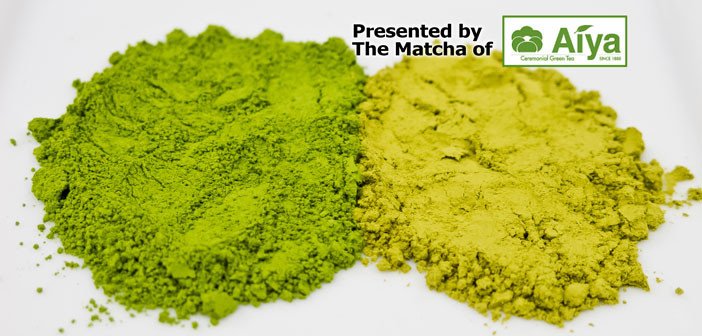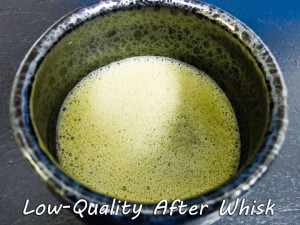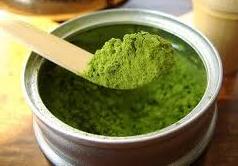note that this article was previously published on June 26th, 2014
When it comes to buying matcha, it’s worth learning the real differences between a quality matcha and one that just isn’t up to par. Here are the 5 simple tips to help you to distinguish between the two, and to enjoy this Japanese favorite.
You may think that simply looking for matcha described as “Ceremonial Grade,” versus “Food Grade” or “Ingredient Grade,” ensures you are buying good matcha, right? Wrong. Not all matchas are created equal. So what’s the difference? Simply, taste. Higher quality grades deliver a smoother taste, a better mouth feel, and are generally less bitter. Conversely, lower grade matcha delivers a coarse and gritty taste. So before preparing a cup of matcha, take the time to find the best quality, and here’s how.
#1: Origin
It’s wise to first look for the country or region of origin. It is generally accepted that higher quality matcha comes from Japan. And there are two regions in Japan widely considered to produce the best. While matcha is produced in several regions, the matcha from Nishio city in Aichi prefecture and Uji city in Kyoto prefecture are both generally considered the top producing areas, accounting for 80% of all the matcha produced in Japan today. China and Taiwan also produce matcha, but Japan remains the favorite among aficionados.
#2: Price
Very simply, matcha is like many things in life – you get what you pay for. But the price of quality matcha can vary. Typically speaking, a 30 gram tin of ceremonial-grade ranges between $26 and 32; anything cheaper is usually in the lower-quality range. Sure, you can find 100 grams for $15, but the difference will be noticeable – leaving a bad taste in the mouth both figuratively and literally.
#3: Color
When it comes to color, look for a really vibrant green. The greener the better! Matcha is shade-grown; in this way, the tea leaves are forced to overproduce chlorophyll, which gives matcha its nice bright green color. Lower quality matcha, by comparison, tends to be made up of leaves that have not been properly shaded, or that may be older and/or harvested from lower on the stalk of the plant; and therefore the color will be yellowish/brownish in hue. (See also the color after whisking below.)
#4: Taste:
If you have ever tasted good matcha, you will have noticed the sweet, vegetal smell to it; this comes from the amino acid called L-Theanine, again produced by the shade growing process. It is the L-Theanine which gives matcha that nice, clean-drinking, green tea taste. And since low-quality matcha conversely lacks L-Theanine, it has a strongly bitter and astringent flavor that isn’t tasty or sweet.
#5: Feel
Take a look at our main picture, above. Matcha looks and feels more like a fine powder than your typical loose leaf tea. The feel and texture of the powder itself can reveal a true quality matcha. A high quality grade is very fine and silky, similar to the feel of eye shadow, because its particle size is only 5-10 microns, meaning that it is as fine as baby powder. A lower-quality grade has a bigger particle size, which results in a coarser feel when rubbed between your fingers.
Finally – Make Matcha Right!
When preparing to enjoy some matcha tea, hot water is added to the powder and then whisked with a bamboo implement called a chasen. Proper whisking adds to the smoothness of the drink- there should be no lumps on the side of the bowl.
Remember – not all matchas are created equal. So, the best way to find the best is to compare a few side by side.
And remember our 5 easy tips: Origin – Price – Color – Taste & Feel.
Enjoy your matcha…
Did You Know?
1. The nutrients in matcha is equivalent to 10 cups of steeped green tea
2. High quality matcha is silkier and tastier than lower quality matcha.
High versus Low Quality Matcha? 5 Easy Tips to Knowing the Difference.”
was presented by
![]()










